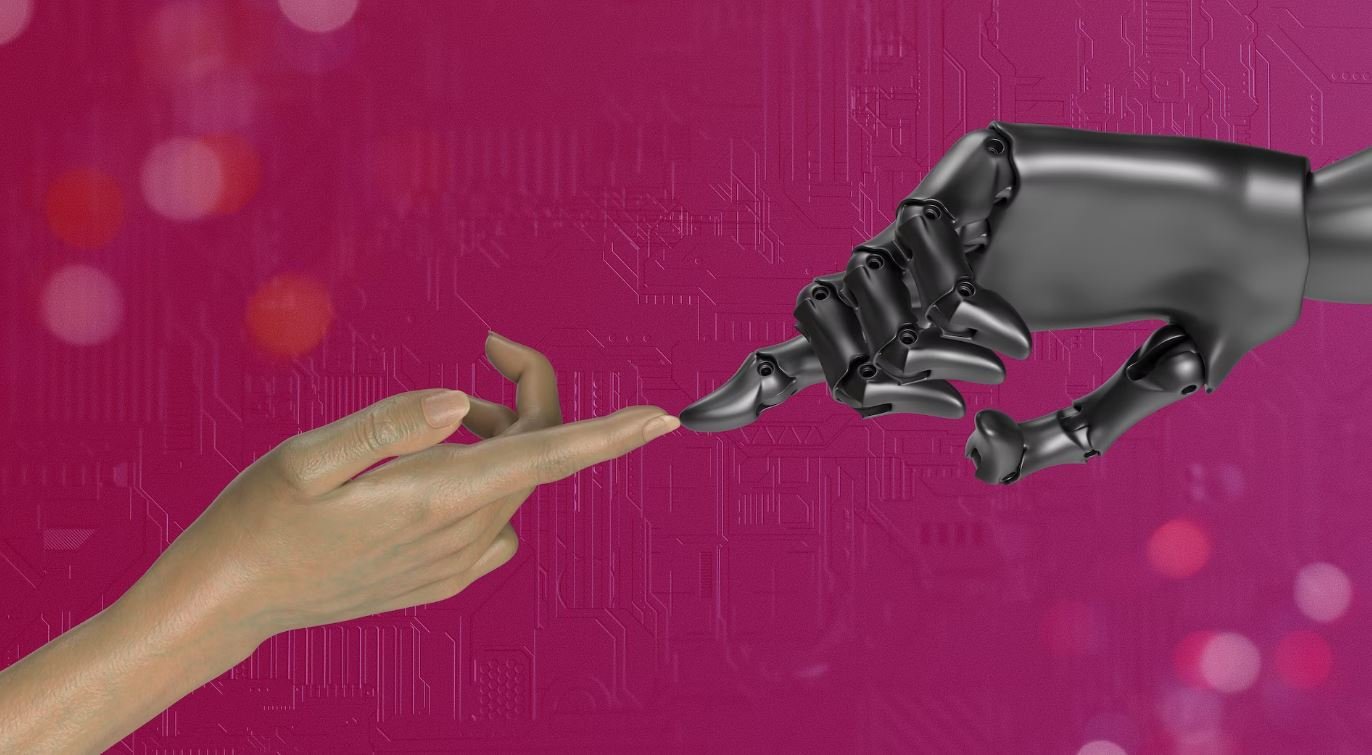Applications Written in Python
Python is a versatile programming language known for its simplicity, readability, and vast array of libraries and frameworks. Its flexibility and ease of use have made Python a popular choice for developing a wide range of applications, from web and mobile apps to data analysis and artificial intelligence. In this article, we will explore the diverse applications written in Python and discuss why it has gained such popularity among developers.
Key Takeaways:
- Python’s simplicity and readability make it a popular choice for application development.
- Python is widely used in web and mobile app development, data analysis, and artificial intelligence.
- Python’s extensive libraries and frameworks provide developers with ready-made tools for efficient application development.
Web and Mobile App Development
Python has become a go-to language for web and mobile app development due to its simplicity and the availability of popular frameworks like Django and Flask. These frameworks offer a wide variety of tools and features that streamline the development process, making it easier for developers to build robust and scalable applications. Additionally, Python’s strong integration capabilities allow seamless interaction with other technologies, making it an ideal choice for building RESTful APIs and integrating third-party services.
With Python, developers can rapidly prototype and develop web and mobile applications with ease.
Data Analysis and Scientific Computing
Python has gained significant popularity in the field of data analysis and scientific computing, thanks to libraries such as Pandas, NumPy, and SciPy. These libraries provide essential data manipulation, numerical computing, and statistical analysis capabilities that make Python an excellent choice for working with large datasets. Python’s simplicity and versatility also make it a preferred language for data visualization, with libraries like Matplotlib and Seaborn offering powerful plotting and graphing functionalities.
Python’s extensive data analysis and visualization libraries empower scientists and data analysts to gain insights from complex datasets.
Artificial Intelligence and Machine Learning
Python is widely used in the field of artificial intelligence and machine learning due to its simplicity, availability of powerful libraries like TensorFlow and PyTorch, and extensive community support. These libraries provide advanced tools and frameworks for building machine learning models and neural networks, allowing developers to solve complex problems and make intelligent predictions. Python’s ease of use and readability make it an accessible language for both beginners and experts in the AI field.
Python’s machine learning libraries empower developers to build intelligent applications that can learn, adapt, and make informed decisions.
Tables:
| Application | Usage |
|---|---|
| YouTube | Used Python for various backend tasks and infrastructure management. |
| Developed using Django framework written in Python. | |
| NASA | Uses Python for scientific research, data analysis, and satellite imaging. |
| Library/Framework | Functionality |
|---|---|
| Pandas | Data manipulation and analysis for large datasets. |
| NumPy | Numerical computing and advanced mathematical functions. |
| SciPy | Scientific computing and optimization algorithms. |
| Machine Learning Library | Usage |
|---|---|
| TensorFlow | Open-source library for deep learning models and neural networks. |
| PyTorch | Popular library for building and training neural networks. |
| Scikit-Learn | Machine learning library for various classification and regression algorithms. |
Conclusion
Python’s popularity and versatility have made it a language of choice for developing a wide range of applications. Its simplicity, extensive libraries and frameworks, and strong community support have empowered developers to create web and mobile apps, conduct data analysis, and build artificial intelligence and machine learning models. From reputable companies like YouTube and Instagram to scientific organizations such as NASA, Python has proven to be a reliable tool for efficient and effective application development.

Common Misconceptions
Misconception 1: Python applications are slow and not suitable for performance-critical tasks
One common misconception about applications written in Python is that they are slow and not suitable for performance-critical tasks. However, this is not necessarily true. While Python may be slower than low-level languages like C++, its performance can be optimized by using certain strategies such as using third-party libraries written in C. Additionally, modern Python implementations and just-in-time (JIT) compilers have contributed to improving its speed.
- Python’s performance can be optimized using third-party libraries written in C.
- Modern Python implementations have improved its speed.
- JIT compilers can enhance Python’s performance.
Misconception 2: Python applications are not suitable for large-scale projects
Another misconception is that Python is not suitable for large-scale projects. This is a misconception because Python has a wide range of tools and frameworks that make it suitable for building large and complex applications. Django and Flask, for example, are popular Python web frameworks that enable developers to build scalable and robust web applications. Additionally, Python’s simplicity and readability contribute to faster development and easier maintenance of large-scale projects.
- Python has tools and frameworks suitable for building large-scale projects.
- Frameworks like Django and Flask aid in building scalable web applications.
- Python’s simplicity and readability contribute to faster development and easier maintenance of large-scale projects.
Misconception 3: Python is not suitable for mobile app development
It is a common misconception that Python is not suitable for mobile app development. While it is true that Python may not be the primary language used for mobile app development, there are frameworks like Kivy and BeeWare that allow Python developers to build cross-platform mobile applications. Furthermore, Python can also be used for developing server-side components and APIs for mobile apps, providing flexibility and integration possibilities.
- Python can be used for cross-platform mobile app development using frameworks like Kivy and BeeWare.
- Python can be used for developing server-side components and APIs for mobile apps.
- Python provides flexibility and integration possibilities for mobile app development.
Misconception 4: Python is only used for scripting and glue code
Another misconception is that Python is only used for scripting and glue code. While Python excels at automating tasks and gluing different components together, it is also extensively used for various other purposes. Python is widely used in data science and machine learning due to its rich ecosystem of libraries such as NumPy, Pandas, and TensorFlow. Additionally, Python is used for web development, game development, scientific computing, and more.
- Python is extensively used in data science and machine learning.
- Python is used for web development, game development, and scientific computing.
- Python has a rich ecosystem of libraries suitable for various purposes.
Misconception 5: Python is not a suitable language for system-level programming
One misconception suggests that Python is not suitable for system-level programming tasks. While Python may not be the first choice for low-level system programming, it can still be used effectively for many system-level operations. Python provides extensive support for interacting with the operating system, manipulating files, and performing system administration tasks. Moreover, Python can be used as a scripting language for system administration and configuration management, making it a valuable tool in many system-level scenarios.
- Python can be effectively used for many system-level operations.
- Python provides extensive support for interacting with the operating system and manipulating files.
- Python can be used as a scripting language for system administration and configuration management.

Python’s Prolific Use in Web Development
Python is a versatile and popular programming language that has gained widespread adoption in diverse industries. In the realm of web development, Python offers a range of powerful frameworks and libraries that simplify the process. The following tables showcase notable applications written in Python, highlighting the language’s prowess in this field.
1. Django
Django is a high-level web framework that powers numerous websites and applications. It provides a robust toolkit for building secure and scalable web solutions efficiently.
| Name | Domain |
|---|---|
| Social Media | |
| Social Media | |
| The Washington Post | News |
2. Flask
Flask is a lightweight web framework that prioritizes simplicity and extensibility. It is widely used for developing small to medium-sized web applications and APIs.
| Name | Domain |
|---|---|
| Netflix | Streaming |
| Social News | |
| Lyft | Ride-Sharing |
3. SciPy
SciPy is a library that provides scientific and technical computing functionality in Python. It offers an extensive collection of mathematical algorithms and tools.
| Name | Application |
|---|---|
| NumPy | Numerical Computing |
| Pandas | Data Analysis |
| Matplotlib | Data Visualization |
4. TensorFlow
TensorFlow is a popular open-source library for machine learning and deep learning applications. It enables efficient training and deployment of neural networks.
| Name | Domain |
|---|---|
| Technology | |
| Uber | Ride-Sharing |
| Microsoft | Technology |
5. Pygame
Pygame is a cross-platform set of Python modules that facilitates game development. It provides functionality for graphics, sound, and interaction.
| Name | Genre |
|---|---|
| Minecraft | Sandbox |
| World of Tanks | Action |
| PySolFC | Card Game |
6. Requests
Requests is a widely used Python library for making HTTP requests. It simplifies sending HTTP/1.1 requests and handling responses, allowing easy interaction with web APIs.
| Name | API |
|---|---|
| Trello | Project Management |
| Stripe | Payment Processing |
| Twilio | Communication |
7. Scrapy
Scrapy is a powerful framework for scraping data from websites. It provides an intuitive way to extract structured data, making it ideal for tasks like data mining and research.
| Name | Data Source |
|---|---|
| IMDb | Movie Information |
| YellowPages | Business Listings |
| Weather.com | Weather Data |
8. SQLAlchemy
SQLAlchemy is a widely adopted SQL toolkit and Object-Relational Mapping (ORM) library for Python. It provides a comprehensive set of tools for working with databases.
| Name | Database Type |
|---|---|
| PostgreSQL | |
| Spotify | MySQL |
| Yelp | SQLite |
9. PyQT
PyQT is a set of Python bindings for the Qt application framework, enabling developers to create cross-platform graphical user interfaces (GUI).
| Name | Type |
|---|---|
| Dropbox | File Hosting |
| Spyder | IDE |
| Middle | Mobile App |
10. PyGTK
PyGTK is a set of bindings for the GTK+ toolkit, offering support for building user interfaces in Python.
| Name | Type |
|---|---|
| GIMP | Image Editing |
| Inkscape | Vector Graphics |
| LXDE Desktop Environment | Linux Desktop |
Python’s versatility is clearly demonstrated by its usage in various web development areas, including frameworks for web application development, scientific computing, machine learning, game development, web scraping, database management, and graphical user interface creation. This wide range of applications signifies the language’s adaptability and reliability, making it an attractive choice for developers across different domains. Python’s longevity and continued popularity further solidify its position as one of the leading choices for web development.
Frequently Asked Questions
What are Python applications?
Python applications are software programs that are written in the Python programming language. These applications can perform a wide range of tasks, from simple scripts to complex web applications and scientific simulations.
Why are Python applications popular?
Python applications have gained popularity due to several reasons. Firstly, Python is known for its simplicity and readability, making it easier for developers to write and maintain code. Secondly, Python has a vast collection of libraries and frameworks that allow developers to build applications quickly and efficiently. Lastly, Python is a versatile language that can be used for various purposes, such as web development, data analysis, artificial intelligence, and more.
What kind of applications can be built using Python?
Python can be used to develop a wide variety of applications, including web applications, desktop applications, mobile apps, scientific simulations, data analysis tools, machine learning algorithms, and more. The versatility of the language combined with its extensive library ecosystem makes it suitable for various domains and industries.
Which companies use Python for their applications?
Python is widely used by many companies across different industries. Some prominent examples include Google, Facebook, Instagram, Dropbox, Spotify, Netflix, and Reddit. These companies use Python to build and maintain various parts of their infrastructure, from backend systems to data analysis pipelines.
What are the advantages of using Python for application development?
Python offers several advantages for application development. It has a simple syntax that is easy to read and understand, making it accessible for both beginner and experienced developers. Python’s extensive library ecosystem provides pre-built solutions for common tasks, allowing developers to save time and effort. Additionally, Python has a large and active community, offering support, documentation, and a wealth of resources for developers.
Can Python applications run on different operating systems?
Yes, Python applications can be developed to run on various operating systems, including Windows, macOS, Linux, and more. Python’s interpreter allows the code to run across different platforms, making it highly portable. This cross-platform compatibility is one of the reasons why Python is popular for developing applications that need to work seamlessly across different systems.
Is Python suitable for web development?
Yes, Python is suitable for web development. There are several frameworks available, such as Django and Flask, which provide the necessary tools and functionalities for building web applications. Python web frameworks are known for their simplicity, scalability, and security, making them popular choices for developers who want to create dynamic and robust websites.
Can I create graphical user interfaces (GUI) using Python?
Yes, you can create graphical user interfaces (GUI) using Python. Python provides multiple libraries and frameworks for building GUI applications, such as Tkinter, PyQT, and PyGTK. These libraries allow developers to create interactive and visually appealing interfaces for desktop applications, making it easier for users to interact with the software.
Is it difficult to learn Python for application development?
Python is known for its readability and simplicity, which makes it an excellent choice for beginners. While learning any programming language requires effort and practice, Python’s syntax is designed to be intuitive and easy to grasp. There are also plenty of resources available, including tutorials, documentation, and online courses, to help beginners get started with Python application development.
Can I integrate Python applications with other programming languages?
Yes, Python supports interoperability with other programming languages. It can be used alongside languages like C++, Java, and C# to extend functionalities or utilize existing libraries. Python provides tools like CPython, Jython, and IronPython, which facilitate integration with other languages, allowing developers to leverage the strengths of different programming languages in their applications.





